By John Silveira
While we are waiting for the Coronavirus pandemic to subside enough so society can get back to normal, there are powerful and simple remedies we can employ to safeguard our health against this deadly disease and other serious maladies such as flu, heart disease, and various cancers. Research on the Coronavirus, in fact, has shown that getting plenty of vitamin D, which is provided readily by exposing your skin to ordinary sunshine, is one of the most important things we can do. If we can’t get enough sunshine, we can take an inexpensive over-the-counter supplement of vitamins D and K. Doing so will cut down our chances of getting Coronavirus by at least 50 percent and reduce the severity if we do get it, according to new research, and also radically reduce our chances of contracting other serious maladies.
This is one of the significant discoveries to have come out of the pandemic. In the wake of the half million dead Americans left behind by Coronavirus, the knowledge that vitamins D and K play such major roles in our health may save countless lives going forward. In the short-term, it may still save our life, or lessen the severity of illness, if we are unlucky enough to get exposed to Coronavirus.
The majority of Americans are deficient in vitamins D and K, especially in the winter and especially if you have darker skin. While 42 percent of white Americans are deficient, 75 percent of Hispanics and more than 80 percent of blacks are deficient.
Observational studies
The evidence for the beneficial effects of vitamins D and K come mainly from “observational health studies,” which are not as tightly controlled or as highly supervised as “cause and effect” studies conducted on thousands of participants over a period of months or years. These observational studies consist of data being compiled by doctors and hospitals treating COVID-19 patients during the current pandemic, and also include relatable studies that preceded the pandemic. Doctors are discovering through trial and error that many of the patients who are either avoiding getting infected or having better outcomes if they do get infected are the ones with adequate levels of vitamins D and K.
The more tightly controlled “cause and effect” studies are underway — dozens of them prompted by these observational studies — and they will come up with more exact data and conclusions that will be helpful fighting the next pandemic. Meanwhile, we have only these observational studies, and we think these front line doctors’ observations are worth acting on right now.
Vitamin D
Vitamin D is not really a vitamin; it’s a steroidal hormone. But we’re going to go with convention and call it a vitamin. It comes in two forms: D2 (ergocalciferol) and D3 (cholecalciferol). D2 comes mainly from plant sources, while D3 comes from animal sources such as fatty fish, fish oil, animal livers, and egg yolks. D3 is also produced in our bodies by certain wavelengths of ultraviolet light (UV) from the sun. When sunlight hits our skin, it converts cholesterol in the skin to vitamin D3.
Once either D2 or D3 are in your body they are not yet in a form your body uses. They are stored in your liver and your body’s fat cells where they remain until they’re needed. Then your liver and kidneys draw on the stores and convert them into the biologically active form of the vitamin called calcitriol.
When doctors measure the vitamin D content of your blood, they actually measure a chemical called calcifediol, which is an interim form of the vitamin before it is converted to calcitriol. Studies have shown that D3 is twice as effective as D2 at raising the calcifediol levels in your blood and therefore the calcitriol your body uses. So if you buy a vitamin D supplement, it is better to buy the D3 type.

What vitamin D does
Before its function in bone development was understood, children severely deficient in vitamin D often developed bone deformities called rickets (the childhood form of osteomalacia). My father, born in 1911, suffered from rickets as a boy, and as a result he grew up with one leg 1½ inches shorter than the other.
Today, rickets is almost unheard of in Western countries, but ensuring children and teens get adequate amounts of vitamin D is still very important. A deficiency at that time in their lives may lead to loss of bone mass and result in osteoporosis when they reach their 60s and beyond.
But vitamin D isn’t just for bones and teeth. It has long been suspected that it was important to a well-functioning immune system, and in recent years vitamin D deficiency has also been linked to a number of other diseases that include arteriosclerosis, congestive heart failure, high blood pressure, type 2 diabetes, and certain cancers such as cancers of the breast, prostate, colon, and ovaries. It’s also been linked to conditions such as asthma and some types of depression.
Today, many observational studies (see sidebar, Observational studies vs controlled random studies vs meta-analysis) have linked a vitamin D deficiency to a susceptibility to various infectious respiratory diseases such as influenza and Coronavirus-induced illnesses including COVID-19.
In this article I’m going to focus on the vitamin and respiratory illnesses, especially COVID-19, and I’m going to start with a handful of studies I found interesting, but there are hundreds I could have drawn from.
Five sample studies
- German study: Before the COVID-19 pandemic, a German study followed 10,000 50 to 70-year-olds for 15 years and found a significant increase in the likelihood of dying from respiratory diseases among those who were vitamin D deficient. This was after adjustments for other variables such as sex, income, education, and other factors.
- Japanese study: A Japanese study done with school children found 42 percent fewer cases of influenza A among those taking a vitamin D supplement as opposed to those who were given placebos.
- European study: In a recent massive study of 20 European countries in which COVID-19 cases and mortality were plotted against vitamin D levels, higher vitamin D levels corresponded to a lower number of cases and reduced mortality; lower vitamin D levels corresponded to a higher number of cases as well as a higher fatality rate.
- Blood clots: A major killer in COVID-19 cases is blood clots. In one study, autopsies found a ninefold increase in blood clots in the lungs among those patients who died and had been deficient in vitamin D, as opposed to those who died but had adequate levels.
- Meta-analysis of studies: The last study I’ll mention is a landmark meta-analysis conducted in the United Kingdom that pulled together 25 separate observational studies, some of which showed vitamin D’s benefits in protecting us from respiratory diseases and others that didn’t. The analysis averaged all 25 studies and the results showed that those who had vitamin D deficiency were at significantly greater risk for acute respiratory illnesses, including COVID-19, than those who were not deficient.
Studies showing an association between vitamin D deficiencies and respiratory illnesses continue to pile up and they have led many scientists to believe that lower levels of this vitamin in our systems during the winter months is one of the reasons influenza is both more prevalent and deadlier at that time of year.
Vitamin D and COVID-19
What do researchers think the role of vitamin D may be in protecting us from COVID-19? One of the things vitamin D seems to do is boost one part of the immune system, which includes the production of inflammatory proteins, so it attacks the viruses while at the same time the vitamin D works to prevent the immune system from overproduction of those same inflammatory proteins. It is these inflammatory proteins, a type of cytokine that, when produced in excess, create what we’ve come to call a “cytokine storm.” When there are too many cytokines flooding the body, they begin attacking the body itself and cause cell damage and blood clots that often lead to death.
So, to put it simply, vitamin D appears to strengthen the immune system while at the same time making sure it doesn’t overreact.
Who is most deficient?
Who’s at risk for vitamin D deficiency?
The populations in this country that have been hardest hit by COVID-19 include people with darker skin, the elderly, and the overweight, and they are also the groups most likely to be deficient in vitamin D.
Skin color: The melanin in our skin helps protect us from the sun. The more melanin, the more protection because it prevents more of the sun’s UV light from penetrating deeply where it can do damage. But the sun’s UV light is also what makes vitamin D in our skin, so the more UV light that is blocked, the less vitamin D your skin produces. Blacks and Mexican-Americans, with more melanin, are at significantly greater risk for vitamin D deficiency than fair-skinned people, especially in the winter when there’s less sunlight. They are also the ethnic groups that have been hardest hit by COVID-19.
Further evidence that shows a relationship between darker skin, vitamin D deficiency, and susceptibility to COVID-19 comes from Stockholm, Sweden, where there is a community of Somali immigrants. Not only do these immigrants have darker skin, but by custom they do not go out in public without most of their bodies covered including their heads and arms. Though they make up a mere 0.84 percent of Stockholm’s population, they account for a staggering 40 percent of all the COVID-19 deaths in that city.
Age: Being elderly has been identified as a comorbidity with COVID-19. As we get older the amount of vitamin D3 produced in our skin by sunlight drops off so that by the time you’re 80, your skin produces less than half as much as when you were 18. As we get older, our bodies also extract fewer nutrients including vitamins from our diets. So shut-ins in assisted living homes and nursing homes, whiling their days away indoors, are another population likely to have low levels of vitamin D in their systems, even if they go out in the sun, and COVID-19 has torn through elderly facilities leaving a swath of death behind.
Body weight: Obesity has also been identified as a comorbidity with COVID-19 and obese people are generally vitamin D deficient. So your weight has some bearing on your vitamin D requirements. The fatter you are, the more vitamin D you need, so if you’re overweight you should take 1½ times as much vitamin D as non-overweight people do; if you’re obese, you should take 3 times as much.
How much is enough?
This brings us to the questions of, “How much vitamin D do you need,” and “How should you get it?” There’s no consensus on either question.
The Recommended Dietary Allowances (RDA), which are recommendations of the National Institute of Health (NIH), are in the chart shown. The numbers are much lower than what the observational studies are recommending, yet 42 percent of Americans, including 75 percent of Mexican-Americans and more than 80 percent of blacks are deficient when measured against these low numbers, along with the elderly and the overweight.
Many people take more than the NIH recommendations. How much more can you take and still be “safe?” Vitamin D toxicity is extremely rare, but the Endocrine Society Clinical Practice Guidelines, published in 2011, recommends no more than 4,000 IUs (100 mcg) per day for adults. However, many studies show no toxicity even at 10,000 IUs per day, and a Canadian study that tracked thousands of individuals taking 10,000 IUs a day for years, indicated toxicity at that dose did not appear to be an issue.
However, even strong supporters of the supplement suggest 10,000 IUs a day as an upper limit. I take a supplement that contains 5,000 IUs, and even with my blonde skin I rarely approach 10,000 IUs on a given day.
How do you get vitamin D?
If you have decided to increase the amount of vitamin D you get, you can do it in four different ways:
1) Sunlight
2) Diet
3) Artificial sunlight using ultraviolet (UV) lamps
4) Supplements
1) Sunlight: Because of skin cancer, we’ve been conditioned for years to view the sun as the enemy. But it can be your friend if you’re smart about it. However, the answer as to how much time you should spend in the sun to get vitamin D isn’t straightforward. It depends on how light or dark your skin is, the latitude at which you live, the time of year (November through February is the worst time to try to get vitamin D from the sun here in the northern hemisphere), the weather (some, though less, UV light still comes through the clouds), the time of day, and how much of your skin is exposed. With so many variables, here’s my advice:
- Get out there when the sun is high in the sky. Dr. Joe Alton, writing for the Winter 2020 issue of Self-Reliance magazine, provided a good rule of thumb. He said that if your shadow is taller than you are, you’re either too early or too late because the sun is lower in the sky and more of the UV radiation required to create the vitamin in your skin has been filtered out by the atmosphere. So the higher the sun is in the sky, the better.
- Do not let yourself get a sunburn — ever.
- For the people with the lightest skin, expose as much skin as you’re comfortable with and limit your exposure to 15 minutes a day when the sun is highest in the sky.
- For those with the very darkest skin, expose your skin, but an hour or more is okay.
It is all these variables, plus the fact that I, like so many others, am indoors most of my time, whether it’s at home, at work, or in stores, or I’m in my car, that even if I’m getting some of my vitamin D from sunlight, I depend on my diet and supplements.
2) Diet: There are foods you can include in your diet that will increase the levels of vitamin D in your body. See the table from the U.S. Department of Agriculture (USDA) with some selected food items and portion sizes you might want to include in your diet.
But here are some qualifiers and caveats about some of the foods in the table.
Sardines: Not all sardines are created equal. The latest studies show that sardines actually contain about 13 times as much vitamin D as shown in the USDA table.
Part of the difference may be because the amount of vitamin D in sardines depends on when they were caught. Those caught and canned in the summer contain more vitamin D than those caught and canned in the winter because more sun is falling on the oceans in the summer, enriching the plankton these fish feed off. This may be the reason the USDA information on sardines has been questioned.

Also, the amount depends on how the sardines are canned. Those canned in water contain slightly more vitamin D than those canned in oil. This is because vitamin D is fat soluble and the oil they’re canned in leaches some of the vitamin out of the fish. Some say you should consume all of the liquid in the can to get all the benefit. I say eat what you want. At most, you’re only losing about 20 percent of the vitamins if you toss the oil or water out. (You can give it to your dogs or cats, if you want.)
Salmon: Wild salmon contains more vitamin D than farmed salmon, and like sardines, salmon’s vitamin content may depend on the time of year they’re caught.
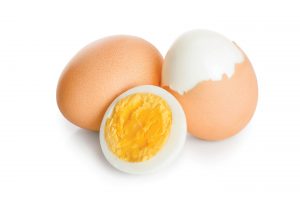
Eggs: All the vitamin D in an egg is in the yolk, but the amount there depends on the hen’s diet and whether she lives caged or runs free. Free-range birds have more vitamin D-enriched eggs. (Their eggs will also have more of the vitamin K2 I’ll talk about later.) Also, some laying hens are fed vitamin D-enriched feed and their eggs have more vitamin D because of it.
Milk products: Though milk is almost always
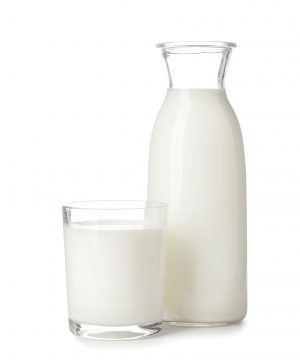
fortified with vitamin D, other milk products are usually not. So don’t assume that when you’re eating ice cream or cheese that you’re
getting your daily dose of the vitamin. Chances are you’re not.
3) Artificial sunlight: There are UV lamps on the market that produce the same wavelengths of UV light that the sun does to produce vitamin D3 in your skin.
The good news is that according to work done at the Boston University School of Medicine, they can do the job about 60 times faster than natural sunlight does. In other words, exposure to the lamp for 30 seconds produces as much vitamin D in your skin as sitting in the sun for 30 minutes at noon.
These lamps use a light-emitting diode (LED) that produce UV light between 270nm and 300nm wavelengths (with 293nm appearing to be the most effective). Because they omit other wavelengths that can damage the skin, they’re safer than sunlight, though not 100 percent safe and you must not misuse them. These lights are seeing their greatest use for treating people who have trouble absorbing vitamin D through their diets. If you’re interested, you should consult your doctor and let him or her recommend one.
4) Supplements: There are many manufacturers of vitamin D supplements, but some are better than others. I subscribe to Consumer Labs (https://www.consumerlab.com/) and use their guidelines. Again, a caveat: For the time being, I take no supplements from China. It’s not that I don’t like the Chinese, but a while back the New York state Attorney General told Walmart they could no longer advertise several of the supplements in their house brand because lab tests had shown they often didn’t contain as much of the ingredients as they claimed, and sometimes they didn’t contain any at all. So I’m playing it safe until I’m sure that’s changed.
By the way, Dr. Anthony Fauci, whose name has been in the news since the pandemic began and who is now Chief Medical Advisor to President Biden, takes a vitamin D supplement.
Vitamin D content of select foods
| Selected Foods | Portion Size | Vit. D (IUs) |
| Salmon and trout | 3 ounces | 384-716 |
| Swordfish | 3 ounces | 564 |
| Sturgeon | 3 ounces | 440-548 |
| Cod liver oil | 1 tsp. | 452 |
| Whitefish | 3 ounces | 436 |
| Mackerel | 3 ounces | 388 |
| Portabella mushrooms, exposed to UV light | ½ cup | 316 |
| Tuna, light, in oil | 3 ounces | 228 |
| Halibut | 3 ounces | 196 |
| Sardines and herring | 3 ounces | 164-184 |
| Rockfish, Pacific | 3 ounces | 156 |
| Milk: 1-2%, fortified | 1 cup | 116-128 |
| Tilapia | 3 ounces | 124 |
| Flounder/sole | 3 ounces | 120 |
| Yogurt, fortified | 8 ounces | 80-120 |
| Soy, almond, & rice milk, fortified | 1 cup | 96 -116 |
| Ready-to-eat cereals, fortified | 1¼ cup | 8-100 |
| Orange juice, fortified | 1 cup | 100 |
| Pork | 3 ounces | 8-88 |
| Mushrooms, morel and chanterelle, raw | ½ cup | 56-68 |
| Margarine, fortified | 1 Tbsp. | 60 |
| Egg, hard-boiled | 1 large | 44 |
| Beef liver | 2½ ounces | 36 |
Chart derived from U.S Department of Agriculture, Agricultural Research Service, Nutrient Data Laboratory. 2014. USDA National Nutrient Database.
Vitamin D as public policy
COVID-19 is the greatest pandemic the world has seen in a century, but there is evidence that vitamin D may prevent some of us from getting the disease and, if we get it anyway, that we may get a milder case. So given the observational data accumulating at least since March 2020, I’ve wondered why there hasn’t been a campaign to supply the public with vitamin D supplements, especially in high-risk groups such as shut-ins, the elderly, those with darker skin, and those with other comorbidities. It would have been cheap, readily deployed, and from the accumulated observational evidence it appears it would have been effective.
The K vitamins
Vitamin K was discovered in 1929 as an essential component for blood clotting (hemostasis). But as with many other vitamins and minerals, over the years researchers discovered the vitamin has other uses in the body. Among them is that vitamin K works with vitamin D to ensure proper development of teeth and bones. It’s also important to heart health and brain functions. It has further been shown that vitamin K reduces inflammation and helps to produce collagen to maintain the health of the body’s connective tissues.
One form of the vitamin, called vitamin K2 MK-7, also appears to increase testosterone in men and lower it in women. Some forms of the vitamin may protect you from cancer, and now it is suspected that it may also protect you from some of the ravages of COVID-19.
Vitamin K is not just one vitamin, but a group of related compounds that many researchers feel should be regarded as completely different vitamins.
For example, though both K1 and the various K2 forms help with blood clotting, studies show K1 does not appear to help heart health, while proper levels of some of the K2 forms significantly reduce the risk of coronary disease. But it wasn’t until 1986 that the United States Department of Agriculture (USDA) even began to distinguish K1 from K2.
K2 is further divided into 11 types that are designated MK-4 through MK-14, depending on the length of a molecular side-chain that is attached to the basic compound. This article discusses only the MK-4 and MK-7 forms because they, so far, have been shown to have the most powerful effects on our health.
Ninety percent of the K vitamins in a typical American diet are vitamin K1. Only 10 percent are forms of K2. But all the forms of vitamins K1 and K2 help the liver to produce proteins to ensure proper clotting from injuries that would otherwise lead to bleeding to death. They also help the liver produce a protein that prevents unwanted clotting, or thrombosis, such as the blood clots that appear in some severe cases of COVID-19. This type of blood clotting is often accompanied by vitamin K deficiencies.
Studies have shown that most Americans are vitamin K deficient and some health professionals have said the deficiency in the K2 forms is so great that 80 percent of the population is getting 10 percent or less of what they need. If you’re not getting enough vitamin K, your liver will hoard whatever’s in your body to make the protein factors for blood clotting, and it only releases what it doesn’t need after it has enough for that. In that case, your liver may be the sole organ in your body not deficient while the rest of your body — your bones, teeth, heart, and arteries — suffer.
This deficiency in vitamin K cuts across class, ethnicity, and gender. Not only are pregnant and nursing women often deficient, but one third of newborns come into this world K deficient. For this reason babies are now given a vitamin K shot right after birth to prevent internal bleeding, especially in their heads.
NIH recommendations for vitamin K
| Life Stage | Recommended Amount |
| Birth to 6 months | 2.0 mcg |
| 7–12 months | 2.5 mcg |
| 1–3 years | 30 mcg |
| 4–8 years | 55 mcg |
| 9–13 years | 60 mcg |
| 14–18 years | 75 mcg |
| Adult men 19 years and older | 120 mcg |
| Adult women 19 years and older | 90 mcg |
| Pregnant or breastfeeding teens | 75 mcg |
| Pregnant or breastfeeding women | 90 mcg |
NIH recommendations
See the table that shows the amount of daily vitamin K recommended by the NIH. But the NIH lumps all forms of the K vitamins together, so it’s possible that you would appear to be getting enough vitamin K because you were getting plenty of just one form (usually K1) but be deficient in the K2 forms such as MK-4 and MK-7 and missing out on their possible benefits.
Many people, including doctors and researchers, believe there may be added benefits in taking much more of the K vitamins than the NIH recommends in this table, which brings up the question of how much you can take before you experience the effects of toxicity.
To date, there have been no toxicity levels established for any of the K vitamins because none have been observed. In fact, in studies done on hip fractures in post-menopausal women, researchers in Japan gave their subjects a whopping 45,000 mcg a day, yet no signs of toxicity were observed.
But there are some caveats you should heed before taking K supplements.
First is for those who are on the blood thinner called warfarin (brand name, Coumadin). Warfarin and vitamin K work against each other. If you’re on warfarin or any other blood thinner, you should consult your health provider because not only will he or she offer you guidance on whether you should take any vitamin K supplements, they should also suggest what foods in your diet are high in K, how much of them you should eat, or whether you should avoid them altogether. This includes K-rich foods such as kale, spinach, collards, and broccoli.
Another caveat is for those who have soy allergies because the MK-7 form of vitamin K2 is usually derived either from fermented soybeans or fermented chickpeas (garbanzo beans) and you should find out which one the manufacturer is using. Third is that statins, some weight-loss products, and low-fat diets interfere with the absorption of vitamin K. Talk to your health provider.
Last caveat: Unlike other fat soluble vitamins, such as A, D, and E, the forms of vitamin K do not store long in your body, so getting some in your diet on a daily basis is important.
Vitamin K1
Vitamin K1 is synthesized by plants. Our bodies principally use K1 to produce the prothrombins that ensure healthy blood clotting.
K1 may also play a role in bone health and in preventing the deposition of calcium in soft tissues, but as we’ll see, several forms of K2 may do all these things better.
Some of the natural sources of K1 are in the table. However, the bioavailability of K1, when gotten directly from plants, is low. We typically absorb less than 20 percent of the K1 that’s in green leafy foods we eat, and it may be less than 10 percent. On the other hand, about 80 percent of the K1 in plant oils, such as soybeans, canola, and olive oil is absorbed, as is 80 percent of the K1 found in over-the-counter supplements.
Vitamin K1 content of select foods
| Food item | Portion size | K1 (mcg) |
| Kale, cooked | ½ cup | 560 |
| Collard greens, boiled | ½ cup | 530 |
| Spinach, cooked | ½ cup | 440 |
| Turnip greens, cooked | ½ cup | 420 |
| Swiss chard, cooked | ½ cup | 300 |
| Brussels sprouts, cooked |
½ cup | 150 |
| Broccoli, cooked | ½ cup | 80 |
| Asparagus, cooked | ½ cup | 70 |
| Iceberg lettuce | ½ head | 60 |
| Romaine and other types of lettuce |
½ cup | 60 |
| Sauerkraut | ½ cup | 60 |
| Soybeans, roasted | ½ cup | 40 |
| Edamame, boiled | ½ cup | 25 |
| Pickles, dill | each | 25 |
| Soybean oil | 1 Tbsp. | 25 |
| Pumpkin, canned | ½ cup | 20 |
| Pine nuts | 1 oz. | 15 |
| Blueberries | ½ cup | 15 |
| Canola oil | 1 Tbsp. | 10 |
| Olive oil | 1 Tbsp. | 8 |
Vitamin K2
The two forms of K2 we’re going to be concerned with are MK-4 and MK7. MK-4 comes primarily from some animal products (e.g., organ meats, milk from pastured cows, and eggs from free-range chickens), while some is also converted from K1 in our gut. MK-7 comes primarily from some fermented foods (e.g., the natto the Japanese eat, sauerkraut, and fermented cheeses).
There are health benefits associated with high levels of MK-4 and MK-7 and health risks associated with deficiencies of the two, and they may be a factor in preventing or treating many diseases. Here’s a list of them.
Vitamin K2 MK-4 content of select foods
| Food | Portion | mcg |
| Goose Liver Paste | 3½ oz. | 366.1 |
| Egg Yolk (Netherlands)† | 3½ oz. | 31.8 |
| Goose Leg | 3½ oz. | 30.8 |
| Egg Yolk (United States)† | 3½ oz. | 15.4 |
| Butter | 3½ oz. | 14.9 |
| Chicken liver (raw) | 3½ oz. | 14.0 |
| Chicken Liver (pan-fried) | 3½ oz. | 12.5 |
| Chicken breast | 3½ oz. | 8.8 |
| Chicken leg | 3½ oz. | 8.4 |
| Ground beef (medium fat) | 3½ oz. | 8.0 |
| Bacon | 3½ oz. | 5.6 |
| Calf liver | 3½ oz. | 5.0 |
| Whole milk | 3½ oz. | 1.0 |
| Salmon | 3½ oz. | 0.5 |
| Mackerel | 3½ oz. | 0.4 |
| Egg white | 3½ oz. | 0.4 |
| Skim Milk | 3½ oz. | 0 |
| Fat-free Meats | 3½ oz. | 0 |
Vitamin K2 MK-7 content of select foods
| Food | Portion | mcg |
| Natto | 3½ oz. | 1100 |
| Hard cheeses* | 3½ oz. | 75.7 |
| Soft cheeses (brie)* | 3½ oz. | 56.1 |
| Curd Cheeses* | 3½ oz. | 24.6 |
| Cheddar cheese* | 3½ oz. | 10.1 |
| Sauerkraut | 3½ oz. | 4.8 |
Blood clotting: The MK-4 and MK-7 forms of K2 are involved in producing the prothrombins necessary for normal blood clotting, just as K1 does. But the K2 forms of the vitamin may actually do it better.
Bone and tooth development: Both MK-4 and MK-7 activate a protein called osteocalcin that helps calcium bind to our bones. This is especially important for those with osteoporosis. Studies in Japan show that higher levels of K2 improve bone density and help prevent bone fractures and, in particular, hip fractures in postmenopausal women.
Heart disease: K2 not only helps your body deposit calcium in your bones and teeth, it also prevents calcium from being deposited in the soft tissues such as the kidneys, lungs, stomach, corneas, and especially the linings of the arteries where it causes arteriosclerosis (hardening of the arteries) that makes the heart work harder, raises blood pressure, and leads to heart attacks and strokes. One study noted that among those with high levels of MK-4 there was a 57 percent reduction in heart attacks. Another study showed a link between high intake of MK-7 and reduced coronary calcification. The healthy aortas had high levels of MK-7, where unhealthy aortas have almost none.
In a Rotterdam study 4,807 people aged 55 or older were followed for 10 years. They received a daily 45 mcg dose of K2 in the form of long-chain menaquinones such as MK-7. They showed 50 percent less arterial calcification, 50 percent reduction in death risk, and a 25 percent reduction in all mortalities compared to those not receiving the dose. Vitamin K1 and MK-4 did not provide any significant protection.
Better yet, for those who have development of soft tissue calcification, there’s evidence the K2 MK-7 forms will reverse the damage and remove the calcium from the soft tissues and place it in the bones and teeth where it belongs. This may provide some patients with noninvasive treatments for this type of heart disease.
Cancer: According to the NIH, research suggests that vitamin K2 helps prevent some types of cancer and may also slow or stop the disease in those who have already contracted it. In an 11,300-man study conducted in Heidelberg, Germany, men showed a 35 percent reduction in prostate cancer. In another German study with 23,000 subjects, those given K2 showed overall lower cancer rates.
More studies are being conducted and, though promising, have only so far involved only certain types of cancer such as liver and prostate cancers.
Diabetes: The NIH reports that supplementation with vitamin K2 improves both insulin sensitivity and glucose tolerance, preventing insulin resistance and reducing the risk of type 2 diabetes. In a Dutch study of 38,000, conducted over 10 years, there was a 20 percent reduction in diabetes among those taking K2.
Aging: Vitamin K2 MK-7 has mitochondrial functions. Mitochondria in the cells is where your body’s energy comes from. Mitochondrial damage and death are factors in aging and K2 can both protect and revive dying mitochondria and make it more efficient. The result is more energy, both physical and mental, especially as we get older.
K2 also shows some promise in treating some diseases that involve the mitochondria, and according to the Parkinson’s Foundation it may help people with mitochondrial-related Parkinson’s disease. In one study, people taking K2 were found to live about seven years longer.
Neurological and cognitive functions: Vitamin K2 MK-4 acts as an antioxidant in the brain helping to prevent damage to brain cells caused by free radicals. Increased K2 has been linked to improved cognitive function including episodic memory (a type of long-term memory that concerns events, as opposed to semantic memory that involves facts) in the elderly.
How much vitamin K2 should we take? There’s no consensus. Forty-five micrograms may be enough, but many health professionals recommend daily doses of 120 mcg each of Mk-4 and MK-7, as well as 120 mcg of K1.
Natural sources of K2
One of the natural sources of vitamin K2 MK-7 are the bacteria in your colon. The problem is that they don’t produce much and researchers have not determined whether much or any of it is absorbed through the intestinal walls and into the body.
Other natural sources are listed in the table shown. Cheeses and sauerkraut are the main sources found in the Western diet, but natto is the major source listed in the table. It is found in the Japanese diet and seldom eaten in America.
My experience with natto
Consumed mostly in Japan, natto is fermented soy beans. Many people, including many Japanese, can’t stand the odor or the taste. One doctor online called natto the “limburger cheese of Japan.” I have a friend who’s of 100 percent Japanese decent, and he hates it. I asked a woman from Japan what she thought of it. She made a face. But I decided to try it for this column.
There’s a store near me, in Medford, Oregon, called Asia Market. They import natto from Japan and keep it in the freezer. I bought two different packages: one cost $2.75 and has three 1.6-ounce servings that each have a small packet of hot mustard, plus a packet with some kind of sauce. The other, which cost $2.59, contained four 1.8-ounce servings but had only the hot mustard.
I thawed one serving out from the first package. It looked disgusting, like Boston baked beans in sticky, stringy goo. It didn’t smell all that good, either. But I tried it.
I liked it! If I had to compare it with another food, its flavor reminded me of a strong fermented cheese, something along the lines of a Camembert or brie. Then I added the hot mustard and the sauce. It tasted even better. Inspired, I then added a little soy sauce I found in my refrigerator. It was delicious.
Checking the health benefits, each 1.6-ounce serving from this package provides me about 500 mcg of vitamin K2 MK-7.

These are the two first brands of natto I bought, and they’re loaded with vitamin K2 MK-7. You can find numerous other brands out there. The package on the left has four 1.8-oz. Styrofoam containers; the other has three 1.6-oz. containers.
In the center is an open 1.6-oz. container. It came with a packet of hot mustard and a somewhat sweet sauce. I’ve eaten natto plain, I’ve eaten it with the
sauces included, and I’ve had it with other things I’ve concocted.
The next day I tried one of the packages that comes with only the hot mustard. The woman at the store, who eats natto herself, sold me a bottle of soup base. She said, “I use a little of this to make it taste better.” I added about a teaspoon and she was right. The 1.8-ounce servings from this package provides about 560 mcg of vitamin K2 MK-7.
I can see myself eating a serving of this on a regular basis, at least two or three times a week, from here on out. In the future I’ll be trying it in omelets, in rice, and in soups. I’ll also continue to eat it with just condiments like hot mustard, Sriracha sauce, soy sauce, or the soup base the woman at Asia Market recommended.
I’ll also try the natto recipes in Linda Gabris’s article, “Breaking ground with natto,” which you’ll find in this issue.
How much natto should I eat? The amount of time the different forms of vitamin K stay in your system varies. K1 and K2 MK-4 do not stay in you for long. However, MK-7, such as is found in natto, has a relatively long half-life of 72 hours. This means that if you ingest 500 mcg of MK-7, three days later about 250 mcg will still be in your system. Seventy-two hours after that, there’ll be half of that, or about 125 mcg, left. So, eating a portion of natto two or three times a week will ensure you have a healthy dose of K2 MK-7 in your system. But I eat it every day.
What I do
My goal is to get 5,000 IUs of vitamin D3 and at least 500 mcg of vitamin K2 MK-4 and at least 300 mcg of vitamin K2 MK-7.
In my daily routine I eat a lot of green leafy vegetables, which gives me plenty of vitamin K1. Plus, every morning with my breakfast I take a supplement that contains 5,000 IUs of vitamin D3 and 100 mcg of vitamin K2 MK-7. Later in the day, with my dinner, I take another capsule that contains another 100 mcg of vitamin K2 MK-7 and 500 mcg of vitamin K2 MK-4. I take them with my meals because these vitamins are fat-soluble.
And now that I’m eating natto a few times a week, I get even more of the vitamin K2 MK-7 form.
Summary
Vitamin K has several benefits.
- It helps develop strong bones and teeth.
- It can prevent the blood clots that are so devastating in severe cases of COVID-19.
- It prevents and can reverse the effects of calcification including arteriosclerosis.
- It may prevent some cancers and have a future as a cancer treatment.
- It improves cognitive functions and memory in the elderly.
- It seems to revive dying mitochondria in your body.
- It may become a treatment for various neurological diseases such as Parkinson’s disease.
Observational studies vs controlled random studies vs meta-analysis
Observational studies are studies in which correlations between events are observed. An example of correlation is that as ice cream sales increase, women wear less. It might seem that the more ice cream that’s sold, the more clothes women will shed. But ice cream sales and how much women wear in public have nothing to do with each other; it’s that warm weather drives both. So observational studies aren’t always reliable.
Random, controlled, double-blind studies are the gold standard of science. In the case of medical double blind studies they mean neither the subjects nor the doctors administering a drug know who’s getting the drug and who’s getting the placebo. This is to eliminate unconscious bias from the test. Only those running the experiment know who’s getting what, and they’re removed from the subjects. An example of such a study would be one run by a drug company testing a new headache medication. They give one randomly chosen group an active form of their drug while they gave a similar group a placebo. They follow the subjects over several years and check to see if there is a statistically significant difference in benefits or harm experienced by either group. From this they draw a conclusion. Ideally, the test would be repeated by others to see if the statistically significant results can be repeated.
Scientists don’t generally like to draw conclusions from observational studies alone. But sometimes they have to and to do so they often group many observational studies together and use meta-analysis to “average them out.” The most famous observational studies from which scientists drew conclusions involve smoking. It would have been unethical to force one group to smoke and another not too. All the researchers could do was to follow smokers and nonsmokers and try to find differences. It was through repeated observational studies and using meta-analysis that they finally felt confident when they linked smoking to cancer, coronary diseases, and general bad health.


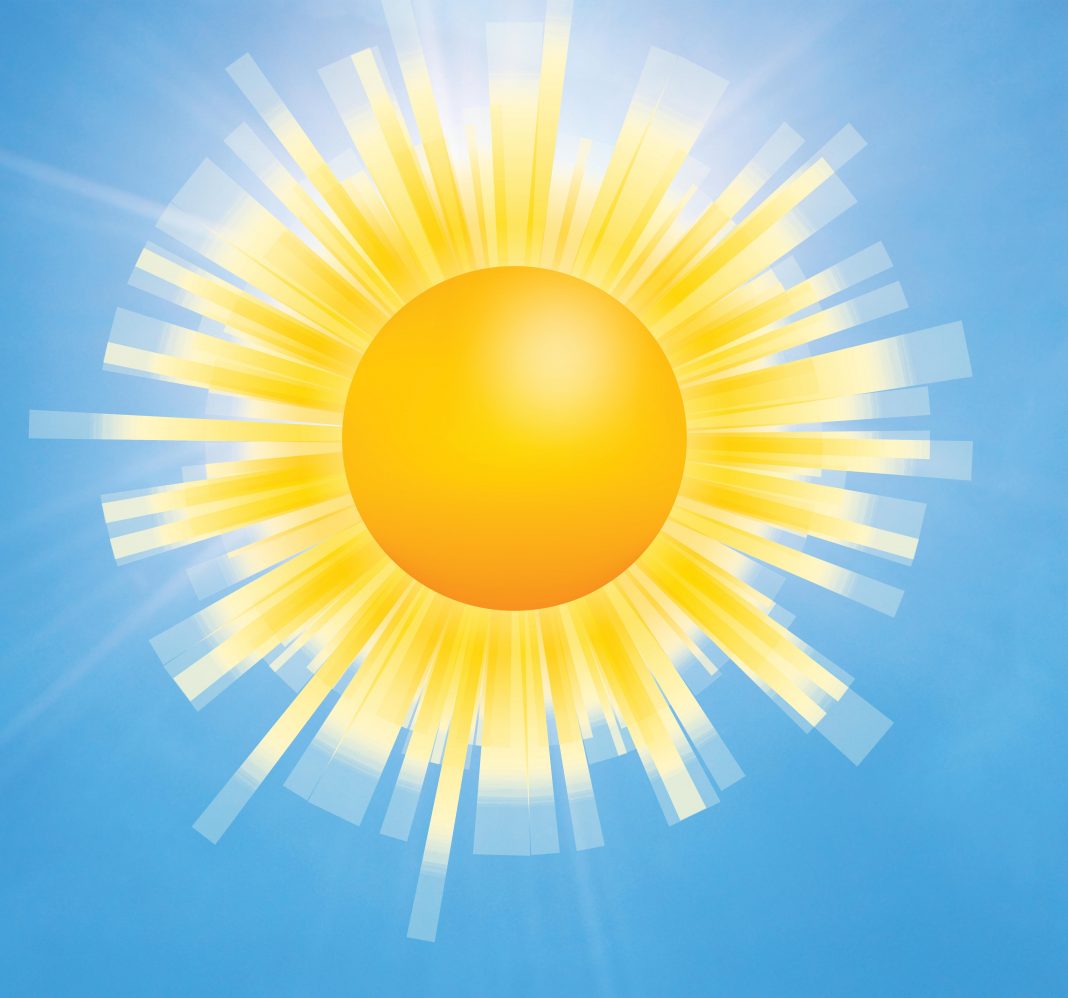









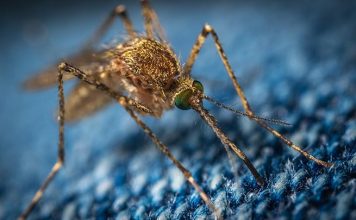
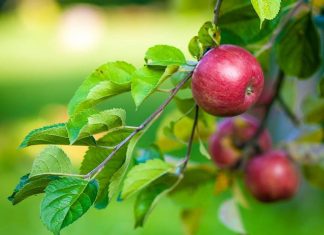

In addition to sunlight and other dietary sources, I have taken 200mcg (1000٪ of RDA) Vitamin D supplement since March of 2020. I just had a brief, uneventful dose of COVID. I have had worse head colds. This with borderline diabetes, obesity, and a propensity for annual bronchitis. Coincidence? Perhaps, but I’m going to continue.
I also take 100mg (1120٪ RDA) of Vitamin C and 150mg (1365٪ RDA) of Zinc on a daily basis.